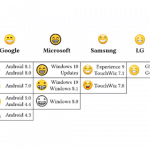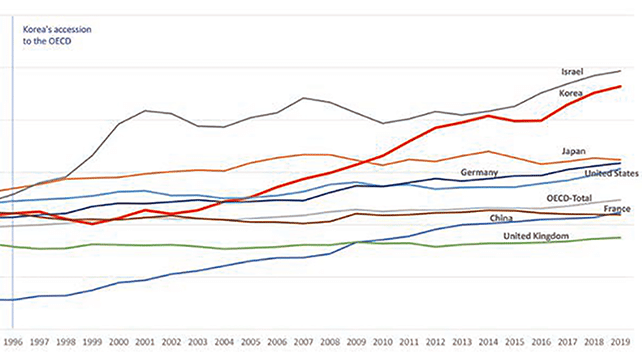Handling Audio and Video Files to Meet eDiscovery Requirements

Emoji – Brief History, Current Impact on eDiscovery & What Lies Ahead
September 12, 2023
South Korea’s Technology Protection Strategy of National Core Technologies
December 25, 2023
In today’s world, audio and video files are routinely created and sent via mobile devices either by SMS text or through social media and work collaboration apps such as Zoom and Teams. As a result, the amount of discoverable audio/video evidence, including content from dashcams, body cams and security cameras, has increased exponentially since 2020. Additionally, data in these formats identified as relevant to a case can be quite significant for strategic and case management purposes, thereby rendering the handling of audio and video files more important than ever with respect to eDiscovery workflows and requirements.
In this blog, we will discuss a few key challenges associated with handling audio and video files, cover best practices, and provide an overview of currently available solutions to help overcome nuances with these unstructured data types.
Current State and Key Challenges with Audio & Video Files
Multimedia files, such as audio and video, present unique eDiscovery challenges since they do not contain standard file characteristics found in PDF or Microsoft Office files, for example, that can leverage existing eDiscovery processing and review workflows. This distinction has made management of these data types one of the biggest challenges in eDiscovery today. According to reports, over 3 trillion minutes were recorded on Zoom in 2021, and while this trend is likely to increase, certain industries enforce legal mandates that require organizations to retain audio and video files, which is another contributing factor to the growing magnitude of these data types.
To offer one example for contextual purposes, a recent case involving a Midwest manufacturer encompassed hundreds of audio and video files showing the installation of the organization’s product in the field. In this matter, the issue focused on defective installation by the manufacturer and failure to maintain by the Department of Transportation. Over 1,500 hours of media files were collected and processed through advanced transcription technology. In the end, less than 10 hours were determined to be relevant.
As noted in the above example, matters that involve audio and video files inherently present new challenges to legal teams and stakeholders. First, there is the comparatively high volume of data which requires more resources, and consequently increased expenditure to keep data online for document review purposes. Whereas thousands of email messages or standard Office files might collectively amount to 5GB to 10GB, this volume could easily be exceeded with just a handful of audio and video files. Therefore, careful planning with collecting required data for these data types is absolutely essential.
A second challenge involves transcription so the data can be searched and reviewed, which has historically been an expensive process. The size and number of files are important factors when deciding whether to simply listen or view all the data, which may be fine for a small quantity of files. However, when dealing with a large number of files, transcribing the data can be the most cost-effective approach as opposed to having staff review files at a very expensive hourly rate.
An additional challenge is that machine transcription does not always capture the appropriate context to correctly transcribe phrases, and in some cases, the actual recorded words. This can be of great importance when managing regulatory inquiries that include compliance or financial investigations, thereby making it essential that clients work with service providers that offer advanced AI and review technologies, such as FRONTEO’s KIBIT AI technology, to help bridge any potential gaps with machines transcription or translation services.
Use Technology to Support Good Workflows and Best Practices
Over the past few years, software providers have developed technologies aimed at reducing the burden associated with processing these data types for eDiscovery. These technologies enable the ability to automatically transcribe, file index, search, and overall facilitate a more complete disclosure review process that provides the benefit of reduced timelines, minimized costs, and increased efficiencies. To provide one point of reference, transcribing 1 hour of audio or video today can be automatically transcribed within 20 minutes.
Of these new capabilities, auto-transcription alone yields significant cost and time savings since alternatives include having reviewers listen to all files at an expensive hourly rate, or having the service provider send files to an external transcription service that could charge an average of $1.25 per minute.
Current technologies available in the market are not only instrumental in simplifying the conversion of audio and video data to conform with eDiscovery requirements and workflows, but they are also innovating by rolling out new features for clients and legal teams. Below are a few relatively new notable features currently available for the management of audio and video files for eDiscovery:
- Time-Coordinated Transcription and Redaction – This new feature enables the redaction of a transcript or transcribed text from an audio or video file, which creates a corresponding white noise or black-out of video on the redacted recording.
- Auto-Detect Visual Objects – This provides the capability to detect general objects such as a vehicle or person and jump right to the object of interest in the file.
- Expanded Detection – This technology enables facial detection and has been expanded to detect the complete visual of a person.
According to Deloitte, the latest eDiscovery technology available for these data types can reduce the time required for transcription by as much as two-thirds, while providing consistent, accurate results. The specific benefits of new audio/video eDiscovery solutions include:
- Improved management and review processes – Modern technology enables legal professionals to deal with the continually growing volumes of ESI generated on different platforms. Automated transcription can speed up and ease the review of audio and video files.
- Auto-transformation of unstructured audio/video content into discoverable formats – Leading eDiscovery platforms leverage automated transcription and video OCR to transform unstructured files into text eliminating hours of work stemming from the sheer volume and complexity of this data.
- Enables informed decision-making – Audio and video communications could contain valuable insights that determine the results of litigation. Extracting facts for further review by legal teams helps eliminate bias and uncover information that may have strategic implications.
- Cost-effective and highly efficient – Advanced integrated functionalities to transcribe and search recordings for evidence help legal teams manage review of audio and video in a systematic and cost-effective manner. Additionally, AI technology has increased efficiencies, cut costs, and facilitated better utilization of time and resources.
- Helps maintain compliance – Efficient use of technology to review and produce unstructured data can significantly reduce costly errors and avoid court sanctions by enabling early case assessment, filtering and review.
The ability to handle audio/video files quickly and efficiently is critical for legal teams. However, this advanced eDiscovery technology is not a replacement for human review and analysis. While it can certainly cut the time and expense of discovery by helping to quickly identify relevant data, the material still needs to be further evaluated for a deeper understanding of its significance. Audio transcription quality depends on audio quality, which can be affected by technical issues such as multiple people speaking at once, similar phonetically sounding words and other factors. Legal transcription outsourcing to a reliable service provider is the best option to overcome these concerns and ensure high quality work product.
Conclusion
Leveraging advanced transcription tools has alleviated many historical challenges by changing a manual process to an automated one that in turn has reduced human error. New tools can now search audio using key terms, redact specific words or phrases on a recording, as well as identify and remove PII from videos that can include faces. As a result, usage of these tools has increased substantially. We live in a virtual world, and as such, legal proceedings and investigations now routinely include media files. Reviewing them in real time is laborious, and if multimedia content is not adequately assessed or incorporated into review workflows, disclosure exercises may be delayed or otherwise adversely impacted.
Should your investigation, litigation, or project consist of media files, it is critical that legal teams explore the use of advanced machine transcription tools and related AI-based technologies. However, be mindful that not all tools are created equal and that using a free transcription program could compromise privilege or confidentiality in that media. Therefore, we always recommend reaching out to a proficient legal services provider, such as FRONTEO, with advanced AI-based technologies and extensive experience consulting on cross-border matters with various data types when confronted with matters likely to contain multimedia data.
Sources:
-
Searching Audio and Video Files – Are you Adequately Assessing Their Relevancy to Your Cases
https://www.jdsupra.com/legalnews/searching-audio-and-video-files-are-you-6792844/ -
Why is audio and Vido eDiscovery important for Law Firms?
https://www.legaltranscriptionservice.com/blog/why-is-audio-and-video-e-discovery-important-for-law-firms/ -
5 questions about audio eDiscovery technology
https://www2.deloitte.com/us/en/pages/advisory/articles/five-questions-about-audio-ediscovery-technology.html
音声やビデオなどのメディアファイルは、保管やレビュー過程においてeDiscoveryプロセスにさまざま課題をもたらしていますが、トランスクリプション*¹やビジュアルオブジェクト*²及び顔検出機能など、テクノロジーツールを利用することでこの課題を軽減できるようになってきました。次なる課題として、トランスクリプションにおける単語やフレーズ、文脈の正確なニュアンスの取得が挙げられていますが、FRONTEOはこのような不完全な内容でもレビューに対応できるAI KIBITを提供しています。FRONTEOはこの高度なテクノロジーとさまざまなデータタイプを使用した、国境を越える問題に関する豊富な経験と熟練したサービスで皆様をサポートいたします。
*¹データの検索とレビューを可能にするために文字起こしすること
*² 車両や人物などの視覚で判断できる物体




